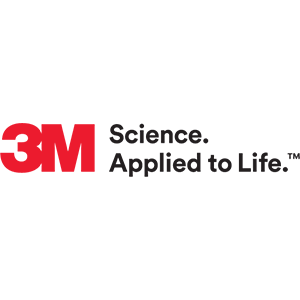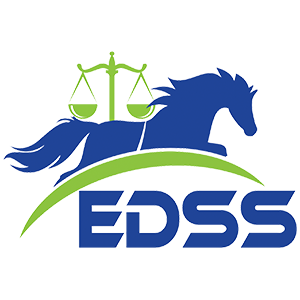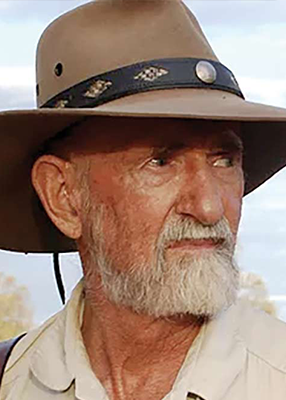
INTERNATIONAL HOOF-CARE SUMMIT
2021 Virtual Lecture Series
Did YOU MISS May's LIVE AND ON-DEMAND SESSIONS FOCUSED ON THE MONTHLY THEME OF "Managing Foot diseases?"
Sign up today for $99 and gain access to replay each live and on-demand session below that was featured during May's program focusing on "Managing Foot Diseases."
You'll also get access to HOURS of upcoming live and on-demand sessions that will be released each month through September 2021!
schedule of monthly virtual clinic themes
September: Improving Product Use and Application
(Coming Soon)
August: Building a Better Business and Client Management
(Learn about August's program here)
July: The Future of Evidence-Based Farriery
(Learn about July's program here)
June: Anatomy and Biomechanics
(Learn about June's program here)
May: Managing Foot Diseases
(Learn about May's program below)
April: Shoeing for Specific Disciplines
(Learn about April's program here)
March: Better Footcare Basics
(Learn about March's program here)
February: Therapeutic Shoeing
(Learn about February's program here)
May PROGRAM THEME: managing foot diseases
Brought to you by:
|
|
SIGN UP TODAY to get replay access to May's sessions...
CASE STUDY HAPPY HOUR — SESSION 1:
"DEALING WITH ACUTE LAMINITIS"
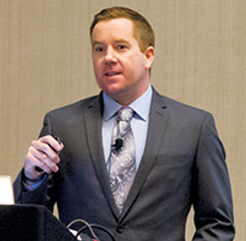
Stuart Muir discusses various cases and shoeing treatments of horses presenting acute laminitic outbreaks.
CASE STUDY HAPPY HOUR — SESSION 2:
"APPROACHING SEVERE WHITE LINE DISEASE AND RESECTIONS"
White line disease is a common occurrence for footcare practitioners. When these cases become severe, more aggressive treatments my need to be pursued, such as a wall reaction. In this session, Stuart Muir presents cases from mild to severe.
Q&A SESSION:
WITH RAUL BRAS, DVM, CJF, ROOD & RIDDLE EQUINE HOSPITAL
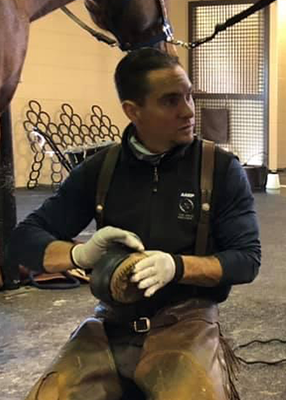
Dr. Raul Bras answers your questions about his May Virtual Clinic Series on-demand presentation, “The Deep Digital Flexor Tenotomy: The Good and Not So Good About It.” The Rood & Riddle Equine Hospital veterinarian and farrier discusses how a properly executed tenotomy that is performed in the correct circumstances can be an effective tool in helping a horse
Q&A SESSION:
WITH PROFESSOR CHRISTOPHER POLLITT, BVSC, PHD
This live Q&A featured Dr. Christopher Pollitt, an International Equine Veterinarian Hall of Fame member and professor emeritus at the University of Queensland School of Veterinary Science in Brisbane, Australia. Dr. Pollitt has developed an international reputation in equine foot biology and disease pathogenesis due to his creation and work with the Australian Equine Laminitis Research Unit.
In an exclusive, first of its kind demonstration, Dr. Pollitt delivers a unique live, hands-on construction of a horse’s distal limb. Dr. Pollitt starts with the seven bones and add tendons, ligaments and cartilage until an anatomically correct and complete distal limb is built using his newly created plastic, multi-component model.
PLUS...GET EXCLUSIVE ACCESSS TO TOP-RATED SESSIONS FROM PREVIOUS INTERNATIONAL HOOF-CARE SUMMITS

Register today and you'll receive on-demand access to these
best-of-the-best presentations from past International Hoof-Care Summits focused on
managing foot diseases:
LIFE AFTER DEEP DIGITAL FLEXOR TENOTOMIES
Dr. Raul Bras, (CJF), Associate Veterinarian, Podiatry Department Rood & Riddle Equine Hospital, Lexington, Ky.
Learn more
A deep digital flexor tenotomy is something that will give clients pause for concern. But Dr. Raul Bras says if it is executed properly, in the correct circumstances, it can be an effective tool in helping a horse. In this presentation, he will discuss key considerations before going forward with the surgery and how to give the horse the best chance for success.
USING THE WOODEN CLOG FOR LAMINITIS
Dr. Steve O'Grady, Farrier and Veterinarian, Virginia Therapeutic Farriery, Keswick, Va.
Learn more
The wooden shoe provides the clinician with an alternative option to conventional farriery when treating a variety of foot problems such as acute/chronic laminitis, white line disease, distal phalanx fractures and poor-quality hoof capsules. The wooden shoe provides a simplified method to apply many of the principles of therapeutic farriery which include redistributing the load or forces on the foot, repositioning breakover and providing heel elevation when necessary. In this session, Dr. Steve O'Grady will review proper application and modifications for this solution.
SHOEING PROTOCOLS FOR THE FOUNDERED OR LAMINITIC HORSE AND WHY
Blane Chapman (CJF), Farrier, Vernon, Texas.
Learn more
The heart-bar shoe remains a revolutionary weapon for managing the painful and deadly founder and laminitis. When the heart-bar came to the forefront, it spurred a great deal of innovative thought for how hoof-care professionals can help these afflicted horses. Vernon, Texas, farrier Blane Chapman will discuss the protocols that he has found the greatest success in shoeing foundered and laminitic horses.
HOW TO PERFORM A DEROTATIONAL SHOEING FOR LAMINITIS: PART 1 AND PART 2
Travis Burns CJF (TE, EE), FWCF, Chief of Farrier Services and Lecturer, Virginia-Maryland College of Veterinary Medicine, Blacksburg, Va.
Learn more
A tenotomy may be necessary in a case where a horse is afflicted with laminitis. In this the first of this two part presentation, Travis Burns reviews his steps for shoeing a horse pre or post tenotomy.
DIAGNOSING AND TREATING CANKER: EFFECT OF THE EQUINE FOOT AND BODY: PART 1 AND PART 2
Dave Giza, APF-I, Culpeper, Va.
Megan Mathias, Veterinarian, Warrenton, Va.
Frank Reilly, APF-I, Veterinarian, West Chester, Pa.
Learn more
The stench is diagnostically distinctive — the tendrils from the sole unmistakable — and for a horse with canker, the clock is already ticking by the time you notice the signs. In this presentation, Culpeper, Va., farrier Dave Giza, Warrenton, Va., veterinarian Megan Mathias, and West Chester, Pa., veterinarian Dr. Frank Reilly will share their evidence-based research in equine canker treatment protocol along with tools for treatment and cure. From identifying factors which cause numerous canker outbreaks, to assessing the impact of mud or footing on disease contraction, to evaluating canker symptoms which extend beyond the hoof — this presentation will provide the answers needed to successfully treat rather than euthanize.
CAN LASER THERAPY HELP HORSES WITH WHITE LINE DISEASE?
Shane Westman, Farrier, University of California-Davis
Learn more
One of the more common problem farriers see is white line disease. University of California-Davis farrier Shane Westman was involved with a research project at the university that looks at the effectiveness of laser therapy for severe white line disease. He shows some preliminary results from the research team and explains how this therapy works.
HORSE BREATHING PROBLEMS AND THE LINK TO LAMINITIS
Frank Reilly, APF-I, Veterinarian, West Chester, Pa.
Learn more
Horses with seasonal asthma or COPD make insulin resistance (IR) worse, which can lead to laminitis. At the same time, asthma/COPD breathing is made worse by IR. In this presentation, West Chester, Pa., veterinarian Frank Reilly will explain that in these horses, it’s important for the farrier to understand that the horse that is puffing hard as it’s trimmed, or that they see in a stall or field struggling to breathe, is likely to be your next laminitis case. The farrier, as a member of the barn-health professional team, needs to understand how this link works in order to bring this potential problem to the attention of the owner.
DISEASES AND CONDITIONS OF THE HOOF CAPSULE
Dr. Simon Curtis (FWCF), Farrier and Researcher, Newmarket, England
Learn more
The hoof capsule consists of three major horn types and two minor types. Together, they fulfill a number of important functions, which include protection of the sensitive tissues within, creating Dr. Simon Curtis a barrier to microbial invasion, providing grip and purchase to enhance locomotion. In this presentation, Newmarket, England, farrier and researcher Simon Curtis will discuss how the hoof capsule is subject to invasion by microbes causing keratolysis, affected by keratomatous growths and cracked by trauma. Farriery is involved in the treatment and alleviation of every assault upon the hoof capsule.
|
|


